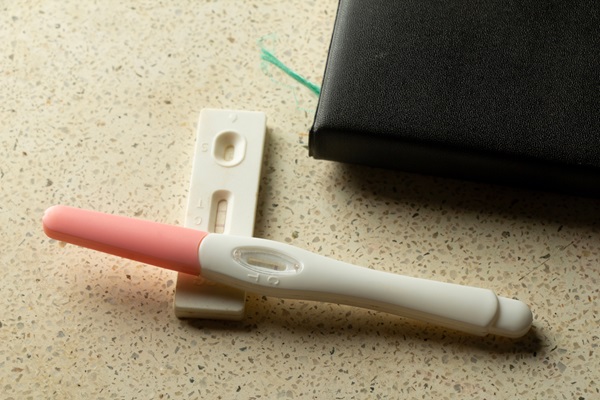The 7 Most Common Minor Injuries in Children

Wondering when children's minor injuries require medical treatment? Read on to learn more. The unfortunate reality is that children can at times be very reckless, even when carefully watched, and they tend to incur minor injuries that require first aid care. By understanding these common minor injuries, parents can better prepare themselves for the next time their child gets hurt.
7 Common minor injuries incurred by children
It is important to have a good understanding of what injuries are most common in children, in addition to which injuries are minor and which are more serious. The following are seven of the more common minor injuries children might experience.
1. Sprains and strains
Sprains and strains are common in children, especially those who play a sport. A minor sprain or strain is typically nothing to worry about. In most instances, they can easily be treated using the RICE method, which stands for rest, ice, compression, and elevation.
2. Cuts and scrapes
Kids are often fascinated by things that can be dangerous. Regardless of how many times parents tell them to be careful with scissors, they somehow still find a way to cut their fingers. Fortunately, minor cuts and scrapes are not a huge concern, and simply cleaning the affected area and applying a proper bandage is often all that is required.
3. Head injuries
Head injuries are a serious concern, especially in children whose brain is still developing. Anytime a child suffers a bump on the head that may have caused a concussion, it is imperative to take them to urgent care. However, a minor bump that seems not to have affected the child should be monitored, but is most likely nothing to worry about.
4. Bruises
Whether it is getting into a scuffle with a classmate or tripping down the staircase, kids often pick up bruises. While it can be concerning at the moment, a minor bruise does not usually require medical attention. However, a bruise that worsens suddenly or lingers for more than a week may need to be followed by a trip to urgent care.
5. Hand injury
Perhaps the most common form of hand injury in children is a jammed finger, which almost every child is likely to experience at some point. Hand injuries such as a jammed finger can be tricky as there may be a broken bone involved, but a minor hand injury that did not lead to a fracture is not something that should cause too much concern.
6. Bloody noses
Bloody noses seem to happen much more in children than they do in adults. In large part, it is because they are typically much more active in sports and are vulnerable to a blow to the nose by a moving object. Regardless of the cause, parents should take care of a bloody nose promptly, but it does not pose much of a threat or need medical assistance in many instances.
7. Eye injuries
Eye injuries are perhaps one of the more concerning injuries children suffer, especially if their vision is temporarily impaired. However, if the child simply got something stuck in their eye or suffered a minor blow to the eye, then the symptoms can be managed and medical treatment may not be necessary if the symptoms improve.
How to determine the severity of minor injuries in children
Many primary care centers use a scale (as well as their experience) to determine the severity of an injury. Of course, for parents, this can be much harder to assess. In general, it is important to focus on the symptoms of the injury. For example, excessive bleeding can indicate a more severe concern that requires immediate care. Another example of a more severe injury could be a head injury that leads to concussion-like symptoms.
However, if the pain level is tolerable for your child and there is no severe swelling or the chance of a broken bone or severe laceration, then the injury is likely minor and not an immediate emergency. For example, this could be in the form of a deep bone bruise to the wrist or hand. When in doubt, it is best to call a primary care center and explain your child’s symptoms.
Has your child suffered some minor injuries?
Here at our clinic, we treat various types of minor injuries (and illnesses) for children. If you are searching for treatment for your child, then contact our primary care center today to schedule a prompt visit. We can also answer your questions and concerns on the initial call, as well.
Get more information here: https://tx-urgentcare.com or call Texas Urgent Care & Imaging Center at (832) 941-1894
Check out what others are saying about our services on Yelp: Read our Yelp reviews.
Recent Posts
A pregnancy testing is one of the most effective ways to confirm pregnancy by detecting the hormone human chorionic gonadotropin (hCG) in urine or blood. In order to produce reliable results, it is important to understand the accuracy, timing, and different options of tests. While many people rely on over-the-counter pregnancy tests, it is important…
Though they play an important role in wellness, regular health checkup are often overlooked. If you only go to the doctor when you get sick or something goes wrong, you could be missing out on key opportunities to avoid health problems and support your overall wellness. If you want to be proactive about protecting your…
Immunizations, or vaccines, protect public health and prevent the spread of infectious diseases. By helping the body develop immunity to harmful pathogens, immunization reduces the risk of illness, hospitalization, and, in some cases, death. Still, some may not know the true significance of immunizations. Therefore, understanding the importance of immunization and keeping up with recommended…
Contrary to what some may believe, diabetes requires professional treatment since it is a chronic condition marked by high blood sugar. With treatment, patients can manage their diabetes and reduce its impact on their lives. A primary care physician, or PCP, will guide patients through diabetes treatment, connecting them with specialists and using treatment strategies…


